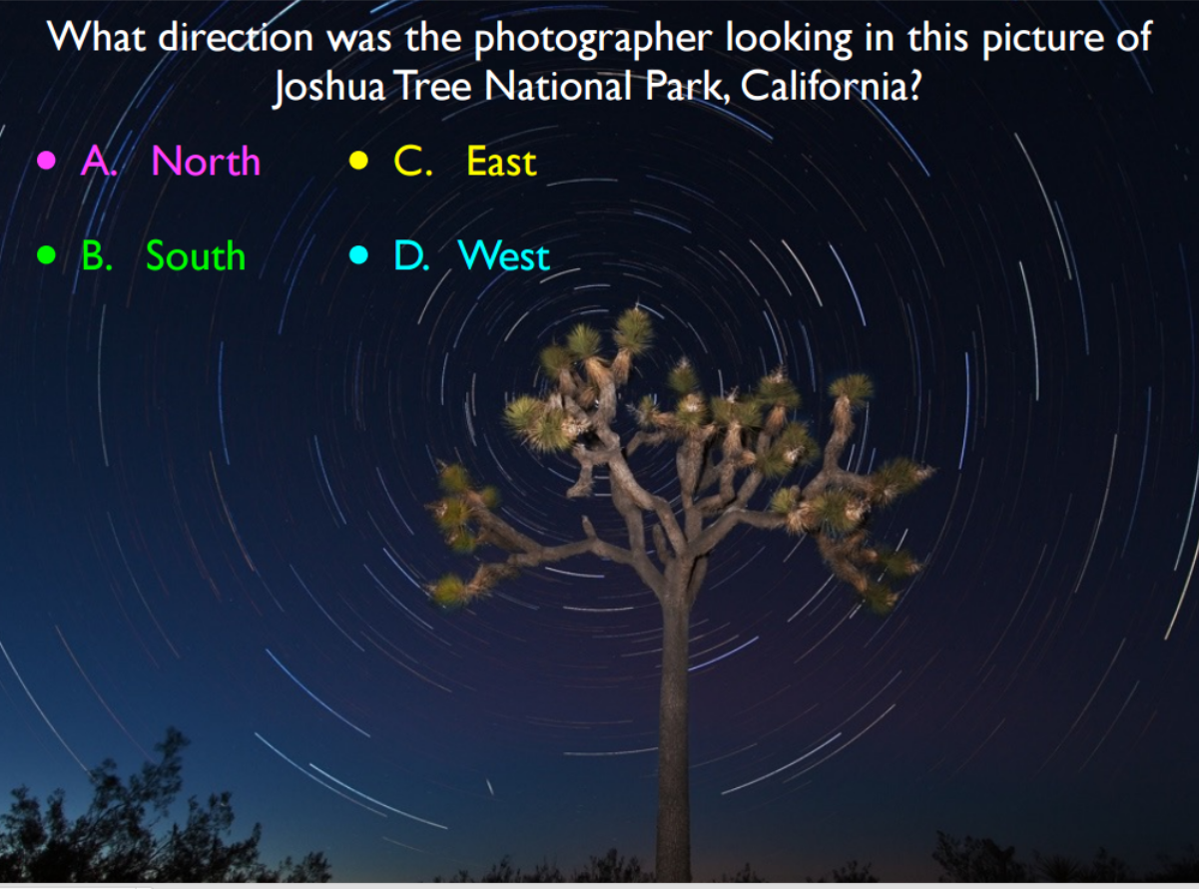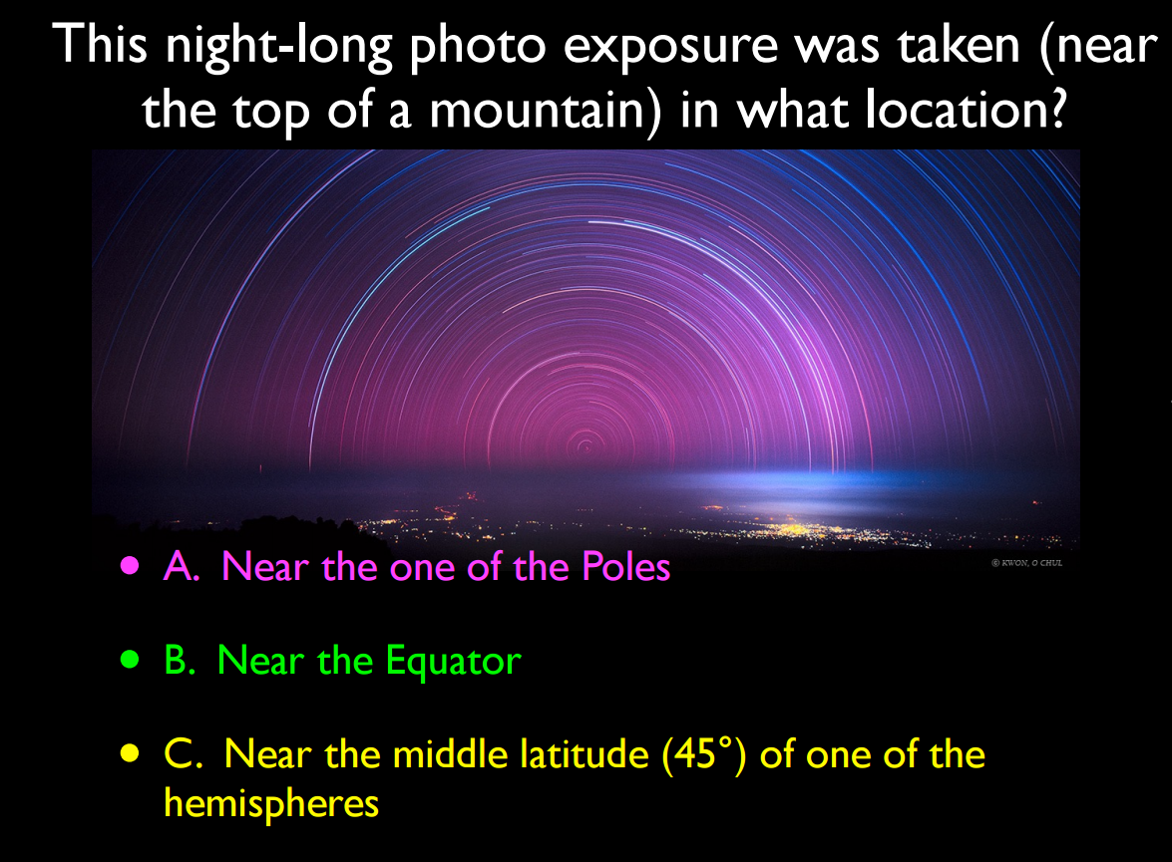The Night Sky
1/12
There's no tags or description
Looks like no tags are added yet.
Name | Mastery | Learn | Test | Matching | Spaced |
|---|
No study sessions yet.
13 Terms
If you were standing on the North Pole, where is the north celestial pole relative to your zenith? Where is the south celestial pole? (label your answers clearly)
The north celestial pole is directly overhead at your zenith, while the south celestial pole is located directly beneath your feet, at the nadir.
Is there a location on Earth where you can see the entire sky over the course of a year?
Yes, at the equator, you can see the entire sky over the course of a year.
The tilt of Jupiter is 3 degrees. Explain how the Earth’s seasons would be different if Earth had Jupiter’s tilt?
If Earth had Jupiter's 3-degree tilt, the variance in seasonal temperatures and daylight would be much less extreme than the current 23.5-degree tilt. This would result in milder seasons with less pronounced changes in weather patterns throughout the year.
If it is June 21st , describe the location of the Sun in the Northern vs Southern hemisphere. How does this change on December 21st?
On June 21st, the suns location is directly over the Tropic of Cancer for the northern hemisphere and it’s directly above the Tropic of Capricorn for the southern hemisphere. On December 21st this inverts in simple terms.

Many magazines post horoscopes at the end of the publication. According to my birthdate, I was born in May which makes me a Taurus. If I go outside in May on my birthday, will I see my constellation up in the night sky? If not, when can I see it? Refer to the image below to help you.
If you go outside on your birthday, you will not see your constellation in the night sky because based on the earths orbit, the sun will be blocking your field of view as you are directly across from your constellation and the sun is between you. You can see it however around your half birthday as the suns light will not be obstructing your view.
Describe the Geocentric Model and explain why this was commonly used.
The Geocentric Model is an astronomical theory that places the Earth at the center of the universe, with all celestial bodies, including the Sun and planets, orbiting around it. This model was commonly accepted in ancient times due to observations that appeared to show stars and celestial objects moving around a stationary Earth.
What is the difference between an Asterism and a Constellation. Give an example of each.
An asterism is a recognizable pattern of stars that is not officially recognized as a constellation; for example, the Big Dipper. A constellation is a defined area of the celestial sphere, such as Orion, which includes several stars and is officially recognized.
What is the significance of an equinox? What is the significance of a solstice?
An equinox marks the time when day and night are of approximately equal length, occurring twice a year, while a solstice signifies the longest and shortest days of the year, resulting from Earth's tilt in relation to its orbit around the Sun.
What is precession? What causes the Earth to precess? What is a consequence of the Earth's precession?
Precession is the gradual change in the orientation of the Earth's rotational axis, caused by gravitational forces exerted by the Sun and Moon on Earth’s equatorial bulge. As a consequence, the positions of celestial objects shift over time, affecting star navigation and the timing of seasons.

Since all these stars are circumpolar, and because you are in the Northern Hemisphere, you must be looking North.

Since all stars are rise and set and there are no circumpolar stars, you must be at the Equator. This picture was taken from Mt. Kilimanjaro.
On September 22, the Sun will set directly to the West.
Where would the Sun appear to set 2 weeks later?
On October 6, the Sun will set slightly to the West-Southwest. After September 22 (Fall equinox) the Sun is headed towards its lowest point (for the Northern Hemisphere). During the winter, the sun rises South East and will set South West.
Which of the following apparent sky motions is caused by the ROTATION of the Earth?
The sky seems to rotate westward once per day. The apparent motion of stars, planets, and the Sun across the sky is caused by the Earth's rotation on its axis.